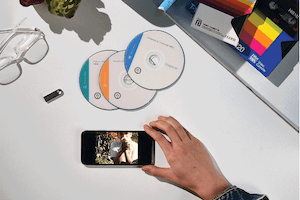Everyday Americans have created home movies since the technology first became available to the public, which began at the turn of the 20th century.
Home movies were shot for the enjoyment of family and friends, and often documented the significant moments in families lives that, over the decades, would be passed down from generation to generation. Video recordings would be captured onto film reels, and then videotapes and eventually families would transfer these home movies to DVD. These motion pictures captured not only the smile of a happy child, as would a photograph, but included the smile formation and maybe even the additional footage of the grandfather who induced laughter with the reliable funny face that only he can pull off in the presence of a beloved youngster.
Video opens us to a moving and fluid world that can quickly transport us back to those significant events and memories that no other medium can achieve. Southtree is committed to preserving home movies to Digital, and with each moment that we preserve for our customers, we know that we have a hand in one of the most important elements of the past – our recollection of it.
History – The Film Era
Early film used by moviemakers required special handling and safe storage due to their spontaneous combustibility.
The Eastman Kodak Company first introduced 16mm safety film in 1923, which was not prone to catching fire, and by doing so set the wheels of home movie making into motion for generations to come. With the help of Southtree.com, families have transferred their old filmed home movies to DVD, preserving treasured footage that was previously locked on 16mm film created decades ago. Southtree.com also preserves 8mm film, which was introduced just a decade later by Kodak, who helped to make home movie creation more accessible to an increasing number of families.
The 8mm film format took 16mm and spliced in half, reducing the amount of the film that was needed to record a home video. The smaller film format lowered cost and allowed video camera manufactures to continually reduce the size of their equipment. Home movies continued to gain popularity with American families and would be the dominant method for recording family videos for several decades, until the arrival of a new magnetic tape format.
Revolutionized in the 80s
The VHS videotape became one of the first video tape formats to become available to the mass market.
This new format housed magnetic videotape inside a protective plastic casing, and would be the model after which all videotape format variations would follow for the remainder of the century. This differed from older open film reels, where all the film would be wound on a single reel and would require a projector to be configured for playback. Videocassette recorders, dubbed VCRs, would become the primary playback mechanism for these tapes. A brief format war ensued, where VHS tapes eventually edged out the rival format Beta. While VCRs were making their first appearance in homes, which enabled Americans to record television shows, the consumer video camera would make a splash onto the scene in the mid 1980s.
The video cassette recorder, or VCR, would transform that manner in which home movies would be recorded all the way until the turn of the century when Americans would begin to record their home movies to DVD and eventually digital files. Sony was the first on the scene with a consumer camcorder, and other rivals quickly brought their versions of the large shoulder mount camcorder. These studio-like cameras were large and bulky, but would offer easy recording capabilities to the average user.
Home Movies to DVD and Digital Files
Moving beyond tape and ushering in the digital era.
As technology progressed, videotapes would become smaller in size and subsequently, camcorders would shrink as well. Compact VHS-C tapes would eventually make the fully sized VHS tape camcorders obsolete. Other videotape formats included Video8 and MiniDV, with each tape format being smaller than its predecessor. Technology even advanced so that compact camcorders could record home movies to DVD. Home movies now are being created everyday with simplistic ease. Cell phones are now capable of recording high definition video.
Technology has progressed a long way from the days of the shoulder mounted camcorder. Southtree is here to keep your recorded memories moving with you, as we enter into the digital phase. Southtree is an industry leader in home movies to DVD conversion and home movie digitization to digital movie files. We help enable customers to sort through the changing formats of home movie recordings that have occurred over time, and chose the right format to enjoy those memories in the future.
